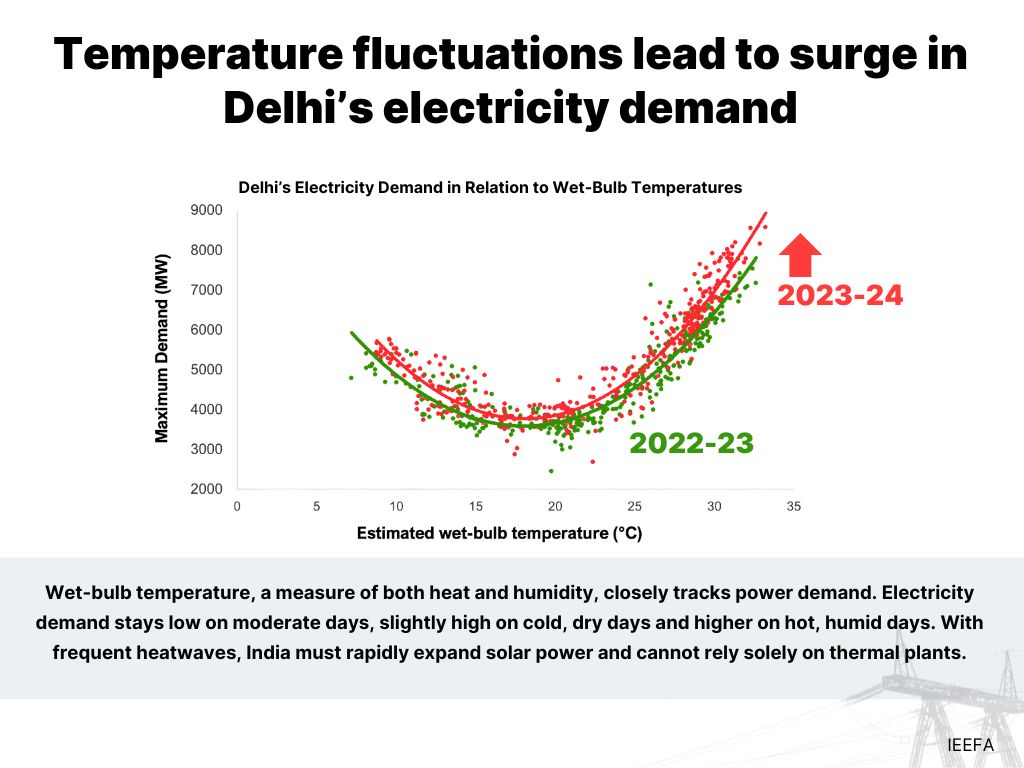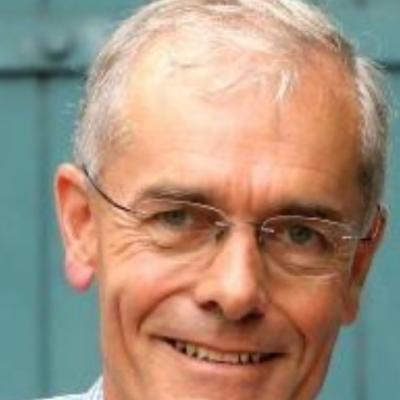Delhi’s peak power demand grew 3.8x faster on hot and humid days than on moderate days in the last 12 months

Hot and humid days nearly doubled in the 12-month period till 22 June 2024 compared to the corresponding period in 2022-23
Key Takeaways:
Delhi’s power demand is lowest on moderate days, but increases substantially on the hottest and most humid days, reflecting the demand for air conditioning and fans, while also increasing (though much less) on colder, drier days when the demand for heaters is higher.
The Northern Region showed a disproportionately high increase in demand in the last 12 months compared to the preceding year, on hot and humid and (to a lesser extent) cold and dry days, than on those with moderate temperatures.
In the 12 months preceding 22 June 2024, Delhi’s year-on-year peak demand growth was 3.8 times higher at 711 megawatts (MW) on the hottest and most humid days than on days with moderate temperatures (growth of 188MW). At the other end of the temperature scale, on cold and dry days, the increase was smaller yet significant at 506MW, or 2.7 times higher than the growth on moderate days.
Delhi witnessed a sizeable jump in temperature-related electricity demand in the last 12 months (up to 22 June 2024), with peak demand increasing by 711 megawatts (MW) on the hottest and most humid days, by 506MW on cold and dry days, but only by 188MW on days when the temperature and humidity were moderate, according to a new briefing note by the Institute for Energy Economics and Financial Analysis (IEEFA).
This analysis used wet-bulb temperature (WBT) – a measure of both heat and humidity – as a yardstick. On hot and humid days, when the WBT was 32.5°C , the year-on-year peak demand increase was 3.8x greater than it was on moderate days (17.5°C WBT), and on cold, dry days (when WBT was 7.5°C), it was 2.7x higher.
The note also highlights a marked increase in the number of very hot and humid days (using 30°C WBT as a threshold). In this analysis, there were 24 such hot and humid days in 2022-23, which jumped to 40 days in the 12-month period just completed. WBTs above 35°C have been considered impossible to survive in for more than a few hours.
“Temperature levels which directly threaten human health have been surpassed far more often in this year’s heatwave. Cooling on such days is no luxury, it is life-saving, and reliably meeting electricity demand is of utmost importance,” says the note’s author, Charles Worringham – Guest Contributor, IEEFA.
Given that heatwaves may soon become the norm, the burden of power generation cannot be borne solely by thermal plants, which are operating closer to full capacity than in recent years. The note suggests that India should ramp up utility-scale solar rather than boost thermal capacity.
Worringham emphasises that moderating the rate of growth in power demand is also an urgent goal. This includes prioritising challenging yet vital programmes at the central and state levels to improve energy efficiency for buildings, as well as encouraging demand-side management initiatives through flexible tariffs and other incentives to curb the growth in peak demand.
Read the briefing note: India Feels the Heat: Wet-bulb Temperature Closely Tracks Power Demand
Media contacts: Prionka Jha ([email protected]); Ph: +91 9818884854
Author contacts: Charles Worringham ([email protected])
About IEEFA: The Institute for Energy Economics and Financial Analysis (IEEFA) examines issues related to energy markets, trends, and policies. The Institute’s mission is to accelerate the transition to a diverse, sustainable and profitable energy economy. (ieefa.org)











